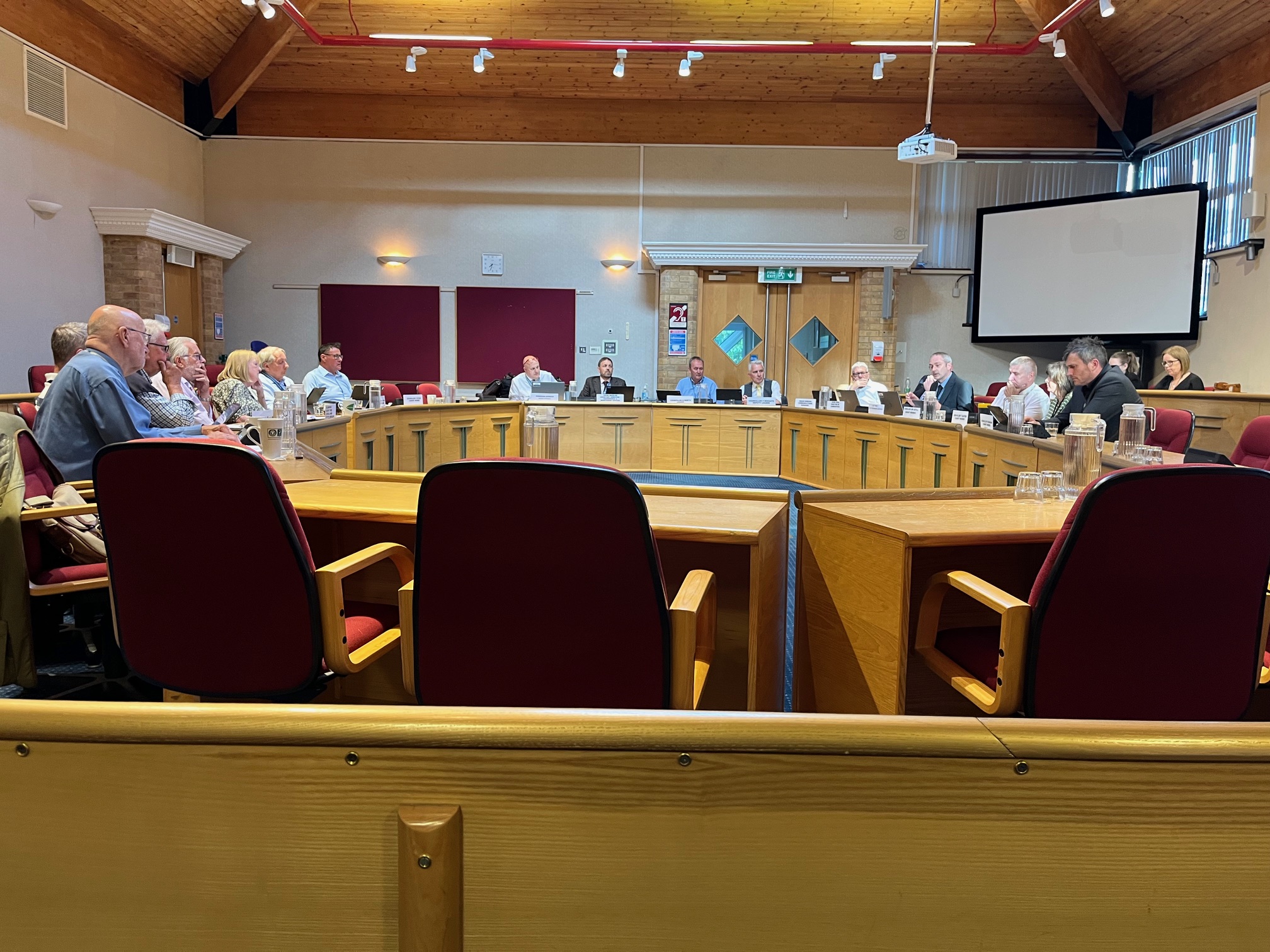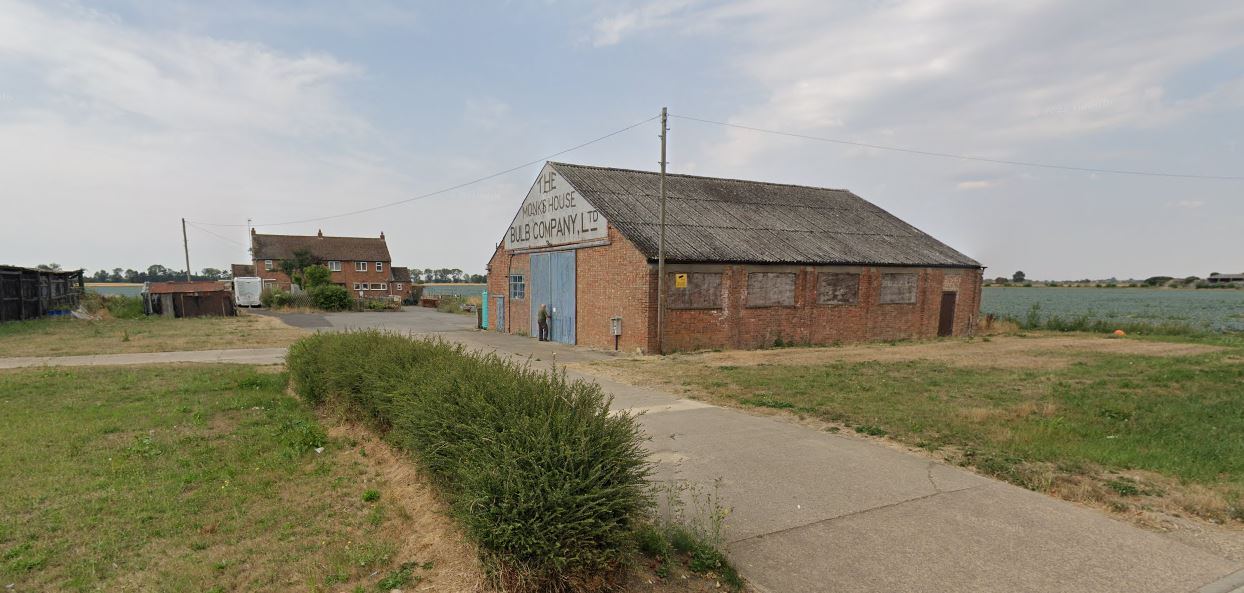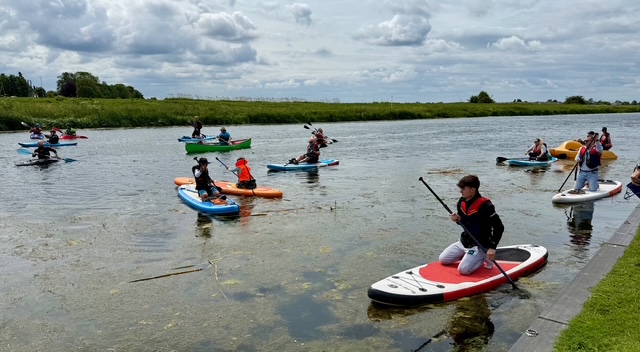I went to the Ossian public consultation event at Fosdyke on Saturday to learn more about their proposals and how they will impact Lincolnshire.
Any sane person attending the recent Ossian consultation events would look at the big map on display showing the floating array off the coast of Scotland and the grid connection route all the way to Lincolnshire and question “what is this lunacy?”
And the Ossian representatives revealed that their first choice was for the 275-turbine array to make landfall in Scotland just 84 kilometres (52 miles) away instead of cabling undersea for 400 kilometres (almost 250 miles) and then underground for a further 80 (almost 50 miles).
Campbell, from Ossian, at the Fosdyke event, said: “Alford and Weston Marsh are the connection points we have been given. We just have to go where we are told. You need to ask NESO (National Energy System Operator) why.”
The huge offshore wind farm, one of the biggest of its type in the world, will be constructed on floating platforms as the sea is too deep for the turbine towers to be sunk into the seabed.
It will generate 3.6GW of electricity, enough to power up to six million homes, and will be developed by SSE Renewables, the Japanese Marubeni Corporation and Copenhagen Infrastructure Partners.
The aim is for final permissions to be obtained by 2030 and have electricity flowing by 2033. As this project is classed an NSIP (Nationally Significant Infrastructure Project) the final go-ahead will be given by the Secretary of State for Energy Security and Net Zero, currently Ed Miliband.
The turbines will connect to an offshore floating substation and at the Lincolnshire end cables will come ashore between Sandilands and Anderby Creek and then continue underground for 80 kilometres in a 60-metre wide trenching corridor (almost 197 feet) all the way to National Grid’s proposed new substations at Alford and Weston Marsh. The trenches, there may be four, will be 1.2 metres deep (about four feet).
The connection corridor is still miles wide. Ossian said the route will be advised and refined by feedback from the public consultations.
Before the four cables connect to the substations they will have to pass through one, maybe two, nearby converter stations at Alford and Weston Marsh.
The converter stations will occupy between five and seven hectares (12.3 to 17.2 acres) and be 20 to 25 metres tall. (65.6 to 82 feet). National Grid has said its new substations will be between 30 and 40 acres. The life span of the infrastructure is anticipated to be 30 to 40 years.
Campbell confirmed pylons and overhead lines would not be used saying “underground, although more expensive, has been selected for environmental and community considerations.”
A spokesman for LAND, Lincolnshire Against Needless Destruction, said: “We welcome the Ossian offshore aspects of the scheme. Not only is a large offshore floating wind farm technically brilliant, it also proves that such energy infrastructure, complete with floating substation, can be built offshore. It’s something we have campaigned for since the start – for offshore power connected to an integrated offshore grid, but making the least impact possible onshore.
“Sadly this is where Ossian falls down with unnecessary cabling for hundreds of additional kilometres on the seabed and then trenched across acres of the most fertile arable land in the country.
“Once connected to the grid the energy can flow anywhere, we are told, although we doubt much will be required in Lincolnshire, so that must apply to a grid connection in Scotland or other locations in the north, much closer to the wind farm. NESO has some explaining to do.”
You can have your say about this project until 11.59pm on Sunday, April 13. More information is available at ossiantransmission.com where you can download a feedback form. You can also email comments to info@ossiantransmission.com and write to freepost ossian transmission. This does not need a stamp. You can also phone the project team on 0800 138 5407.
Andrew Malkin
Moulton






